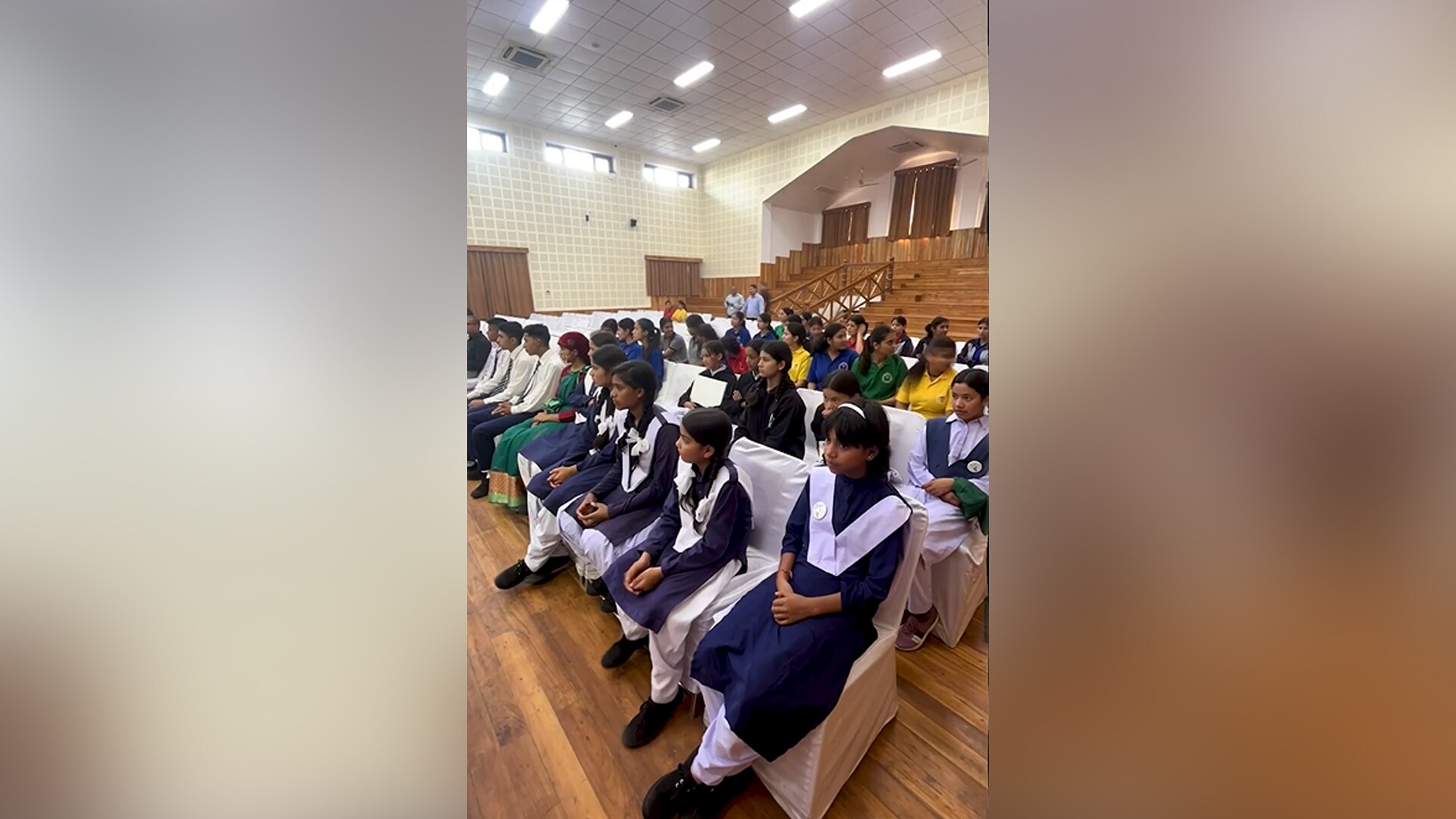

- Home/
- Top Stories/
- Government Should Make More Spectrum Available: Qualcomm
Government Should Make More Spectrum Available: Qualcomm
NDTV's Prashant R Nair caught up with Qualcomm Incorporated president Derek Aberle on the sidelines of the annual World Economic Forum meet at Davos. Mr Aberle spoke about the telecom sector and its growth potential and how the government should make more and more spectrum available.
Here's an edited transcript of the interview:
Question: You recently commissioned a report by the Boston Consulting Group which looked at how the telecom and mobility sector can add to overall growth. Let us start by asking you one of the findings of the Boston Consulting Group report specifically with regards to India. What does it tell?
Answer: We make very large investments in the telecom sector in mobile technologies in particular. I think it is intuitive to many of us in the industry that mobile technology is really driving tremendous growth, not only in the industry but in many other sectors that are adopting mobile technologies. So we decided to retain the Boston Consulting Group to do an independent look at this and try to put some numbers around it and the findings are pretty remarkable in terms of the value not only created by the technology but delivered to the society both through financial as well as societal benefit. A couple of the findings just generally and then I will talk more specifically about India. The amount of revenue generated by mobile technologies in 2014 was around $3.3 trillion, which is pretty staggering when you think about it. And that is forecast to go forward and also there is about $1.8 trillion of investment put in the sector to really drive that in as we look ahead to the challenges ahead in terms of what investments need to be done to drive the technology. There's going to be probably $4 trillion of additional investment between now and 2020 to continue to add capacities and build networks to connect the rest of the population around the world. In India in particular, (there were) some pretty interesting findings, mobile technologies contributed about 2.2 per cent to GDP growth in India that was slightly lower than couple other countries that were in the study. We actually looked at 6 countries in total including China, the United States and Brazil in that bucket and you look at the growth though in the subscription base in India and it has been remarkable in the last 10 years. In 2004, there were about 50 million subscribers, which is now close to about 900 million so really tremendous growth now.
Question: In terms of subscriber growth, India has actually added on at one of the fastest paces but in terms of percentage contribution to GDP, we are the lowest. So how do these two things fit?
Answer: You are at the lower end of the countries that we took. I think a part of it is that most of the growth that has happened in India has been around 2G or second generation technology which is much more voice-centric. And as the industry transitions to 3G and now 4G, that's really driving some of the productivity cases and use cases that take advantage of this higher data rates. In many other countries, that, for a variety of reasons but in particular the spectrum availability, has probably outpaced that of India. In many of these places network works around 3G and 4G have been deployed at a much faster rate at that's really the engine that drives a lot of this growth.
Question: Do tariffs play a role? Tariffs here, for example, are too low. Competitive intensity is very high in India.
Answer: Yes, it's been a very very competitive market in India. I think the current competition really has been around voice and sort of a lower end of the data market and I think there's an opportunity for the ecosystem really to capture some more value as they migrate to 3G and 4G, because really it's delivering a much more robust user experience. If you look at it even now in India, on the flip side, it was actually one of the higher countries in this particular metric and that was the percentage of income that people are willing to spend on mobile technologies . India was actually at 45 per cent, which was at the high-end. So it seems to me that there's a very big thirst for mobility in India and as the networks involve and the technology supports higher data rates and better capacity. There's a great opportunity there drive you there in more productivity in India than many of the other countries.
Question: It has been a couple of years since 3G was introduced in India and now we are talking about 4G. In your assessment, is the ecosystem ready for 4G? We have a player which is going to come on screen very soon, but is the ecosystem ready?
Answer: Yes, I think you have seen really great strides in the technology over the last five years. Obviously the rolls-out first happened in the US, but then pretty quickly after that, many other countries (followed). And now the ecosystem is being developed around the roll-out of LTE, which is 4th generation technology, in China. It really provides all the tools needed to drive this revolution in India. What I think has been missing so far is that the 3G networks have not been deployed at the same scale as many other countries primarily because of lack of spectrum. I believe if that can be solved in the near term the 3G networks will be rolled out quickly and then LTE will follow on top of that. There are some operators that are talking about moving straight to LTE or 4G. You know, the dynamics are little different and it's probably a better path for them to deploy 3G and 4G as well.
Question: We come back to spectrum availability. In India, spectrum auctions are going to take place and while a lot of talk is focussed on the price of the spectrum and that is it too high etc. There has been a fervour of back and forth between the regulator and the government about how much spectrum do we really sell. What are your thoughts about that?
Answer: Our view is that there is going to be an increasing need for spectrum. Every place in the world that we have seen spectrum being auctioned, including the current auction going in the US, prices have continued to climb even when 40 megahertz or more of spectrum is being auctioned in a single auction. So I won't be particularly concerned about 40 megahertz block of spectrum you know being too much to drive down the value of spectrum. The value of spectrum only increases over time and to really get the advances, we need to drive things like advances in mobile health and education as well as some of the productivity gains that we have seen out of this study. There doesn't need to be more spectrum available in India.
Question: In India, from the 2100 megahertz band, the government has been willing to sell 5 megahertz and you need 15-20 megahertz regularly so there is a bit of a standoff there. What would your advice be to the government?
Answer: Our advice to every government is that you should make as much spectrum available as possible and if you look at places that have auctioned and sold a large amount of spectrum, the operators are still asking for more. That's because there's tremendous data crunch on the networks. So, most of the operators are projecting that the amount of data that they will need to provide in 10 years will be a thousand times greater than they provide today. So we are working on a number of technologies to help improve efficiency and get more capacity out of each bit of spectrum but the strategy also needs to be long term planning to make additional spectrum available. There's no way you will be able to connect to the number of people that need to get connected to 3G and 4G in India without a lot more spectrum available.
Question: You can get people on, but to be able to drive some of the things you mentioned, you need the spectrum, right?
Answer: Yes, absolutely. User experiences are evolving as such. People are consuming more and more content on mobile device and one of the other statistics that came out of the study was that around 72 per cent of users have their primary broadband access over mobile in India and that makes sense because it's less wired than many other countries. As you look at the lot of developing countries around the world, people are getting on the internet for the first time on a mobile device and that is their primary mechanism for accessing content. So you think about how do you bridge this digital divide between the rural areas and the developed areas and it's going to be by having more capacity.
Question: There's a study look at the amount of growth rates and the amount of spectrum that is made available. Is there a direct sort of co-relation between the two which should be looked upon quite seriously?
Answer: I am not sure how much did they co related that but what they did do was that they a did a bunch of quantitative studies and reached conclusions at the end. One of the conclusions at the end of the report was basically a recommendation to policymakers that control spectrum: effectively you should make more spectrum available for mobile services. And you see the productivity gains in many different areas. Another area they looked at was small and medium size enterprises (SMEs) and they looked at the enterprises that adopted mobile technology vigorously and then those that had poor adoption. There was about two times greater revenue growth as well as job creation growth from the companies that really weren't embracing mobile. So it really goes across from user experience to social benefit to even creating jobs and driving revenue for the small companies that are that are out there.












